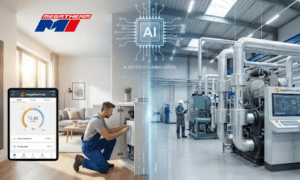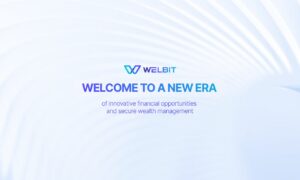Industry architects embrace modular integration strategies to accelerate transformation, reduce costs, and future-proof HR ecosystems.
As global enterprises push deeper into digital transformation, integration is emerging as a critical factor in how quickly organizations can modernize and scale their HR technology landscapes. In particular, the shift from legacy point-to-point architectures toward standardized, reusable integration frameworks is gaining momentum across industries. Within the Oracle HCM Cloud ecosystem, architects and solution leads are using these frameworks to enable faster automation, lower operational costs, and improved interoperability between HR and Finance systems.
One of the practitioners at the forefront of this movement is Kranthi Kumar Routhu, an enterprise architect specializing in Oracle Integration Cloud (OIC) and large-scale HR integrations. His work reflects a broader industry trend: replacing fragile, custom-built integrations with modular, event-driven frameworks that support more agile and secure enterprise operations.
A Shift in Enterprise Integration Strategy
For years, organizations relied on custom point-to-point connections to link HR, payroll, benefits, and financial systems. These solutions often worked in isolation but were brittle, expensive to maintain, and difficult to scale across geographies or business units. As cloud adoption accelerated, their limitations became more pronounced, especially for enterprises operating across multiple regions and regulatory landscapes.
Reusable frameworks offer a structured alternative. Using prebuilt adapters, HCM Extracts, Atom feeds, and an API-first design, enterprises can build once and scale widely, reducing the complexity of onboarding new systems. According to market forecasts by Gartner, more than 65% of large organizations were expected to adopt Integration Platform-as-a-Service (iPaaS) solutions as a core automation enabler by 2020—a trend that aligns directly with the shift toward standardized integration patterns.
“The future of enterprise HR is modular and intelligent,” says Routhu. “When you decouple innovation from infrastructure, you create the flexibility enterprises need to respond quickly to change.”
Engineering for Speed, Scale, and Security
Enterprises adopting reusable frameworks report measurable gains in speed and efficiency. Instead of reengineering integrations for each downstream system, a standardized framework allows for rapid onboarding sometimes in weeks rather than months. This translates to reduced development effort, lower maintenance costs, and a more consistent governance model.
The approach also improves data integrity and security, two of the most significant pain points in HR-IT collaboration. Real-time synchronization reduces reconciliation errors and latency, while built-in security measures such as role-based access controls, encryption, and audit logging help organizations maintain compliance with regulatory standards. This model is especially relevant for financial services, healthcare, and manufacturing sectors, where integration precision directly impacts operational continuity.
Ecosystem Momentum and Industry Context
Kranthi’s work aligns with a broader evolution in enterprise cloud adoption. Between 2017 and 2018, his published articles outlined key stages of this transition, including:
- February 2017: “The Evolution of HR from On-Premise to Oracle Cloud HCM”, tracing migration strategies from legacy HRIS.
- February 2018: “Seamless HR-Finance Interoperability”, proposing a unified framework for real-time payroll and finance integration.
- August 2018: “Reusable Integration Frameworks in Oracle HCM”, focusing on modular architecture and event-driven orchestration.
Industry analysts note that this pattern-based approach mirrors trends across multiple iPaaS platforms, including those adopted by Fortune 500 organizations looking to reduce integration complexity. While Oracle’s native ecosystem plays a central role, similar architectural principles are also being explored in platforms like Workday, SAP, and ServiceNow.
A senior enterprise cloud strategist noted, “Reusable frameworks are increasingly viewed as a necessary evolution and is not a luxury. They allow companies to innovate at scale without sacrificing control.”
Breaking the HR, Finance Barrier
One of the most significant advantages of this architectural model is its ability to bridge the gap between HR and Finance systems, traditionally among the most siloed enterprise functions. Instead of relying on overnight batch jobs that create reporting delays, event-driven topologies synchronize workforce and financial data in real time. This gives leadership teams clearer visibility into labor costs and workforce movements, enabling more agile budgeting and compliance management.
Real-world deployments have demonstrated that such frameworks can reduce integration latency, minimize manual reconciliation, and increase auditability during payroll and cost allocation cycles. This capability is increasingly critical as global enterprises face rising demands for transparent, accurate reporting.
Security and Trust by Design
Modern integration frameworks must also address a new threat landscape. Routhu’s architectural approach embeds security from the ground up, aligning with enterprise trust models and regulatory obligations. This includes OAuth2 and SAML-based authentication, granular role-based authorization, masking and encryption of sensitive data, and comprehensive logging and monitoring.
These controls are designed to support compliance with regulations such as GDPR and HIPAA, while maintaining operational agility. Analysts emphasize that security baked into the framework not bolted on later can significantly reduce both compliance risk and total cost of ownership over time.
A Glimpse into the Future: Intelligent Integrations
The evolution of reusable frameworks is still unfolding. Experts anticipate that the next generation of enterprise integration will be AI-enabled and self-healing. Predictive analytics and machine learning could detect anomalies, adjust orchestration flows automatically, and optimize performance before failures occur.
“Today, we build for reusability and governance,” Routhu explains. “Tomorrow, these frameworks will be autonomous systems capable of learning and adapting on their own.”
This projection aligns with research from Forrester Research, which predicts rapid adoption of AI-driven integration by large enterprises in the next decade.
Challenges and Considerations
While reusable frameworks offer clear benefits, implementation is not without its challenges. Organizations must invest in skilled integration teams, strong governance models, and standardized design principles to avoid sprawl. Additionally, aligning global compliance and security standards remains a complex undertaking in multi-tenant environments.
Industry experts caution that success depends as much on organizational readiness as on technology choices. Effective change management, executive sponsorship, and clear architectural governance are critical to unlocking the full value of these frameworks.
Conclusion: A Structural Shift, not a Trend
Reusable integration frameworks in Oracle HCM represent more than a technical enhancement they signal a structural shift in how enterprises think about interoperability, security, and agility. By moving away from brittle point-to-point integrations, organizations can future-proof their digital ecosystems, respond faster to market shifts, and maintain compliance in increasingly complex operational landscapes.
While practitioners like Kranthi Kumar Routhu are helping to shape this transformation, the movement is bigger than any single contributor. It reflects the convergence of cloud maturity, automation, and architectural discipline are three forces driving the next phase of enterprise modernization.



































